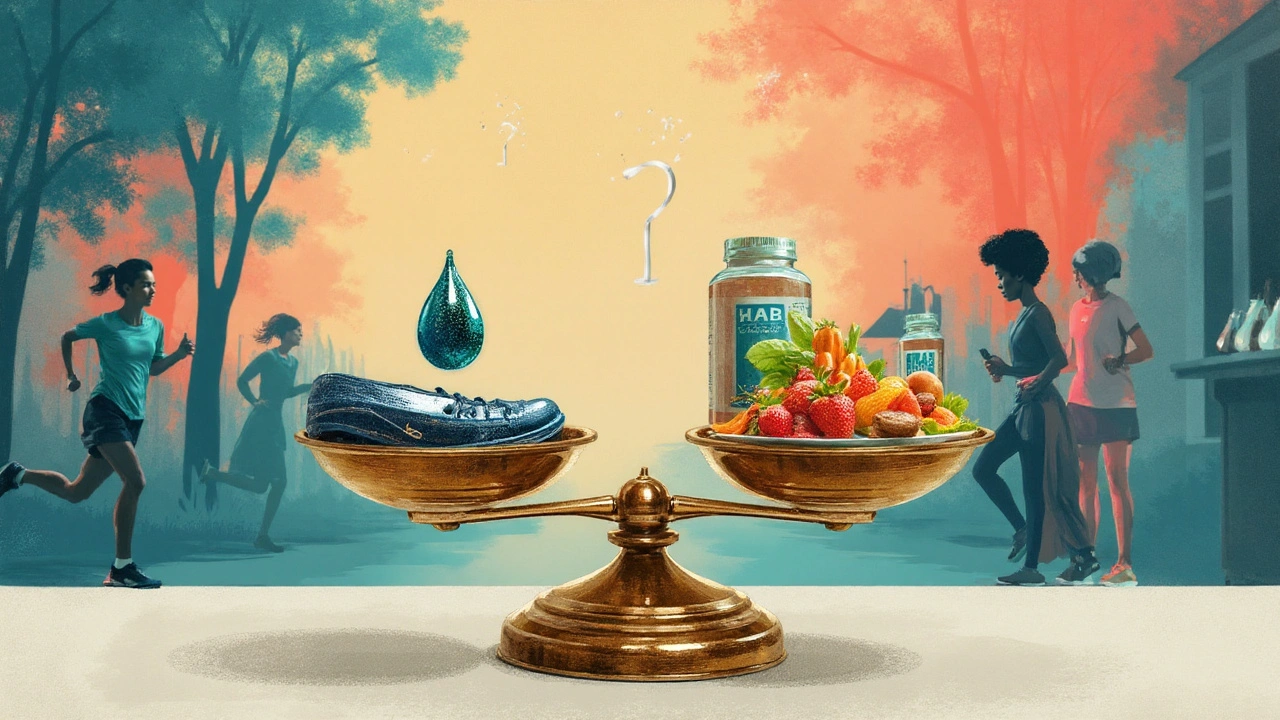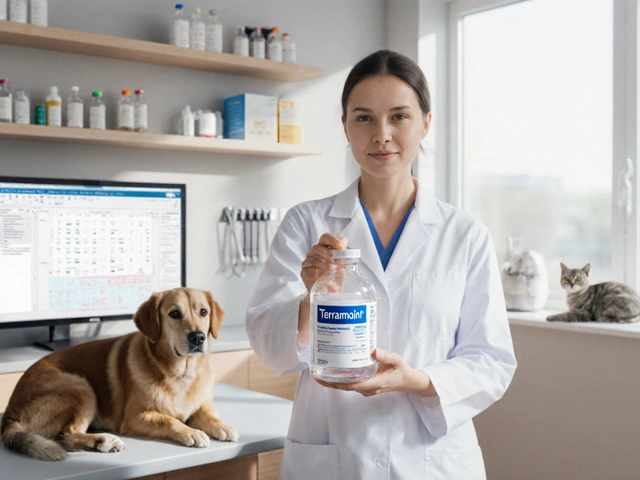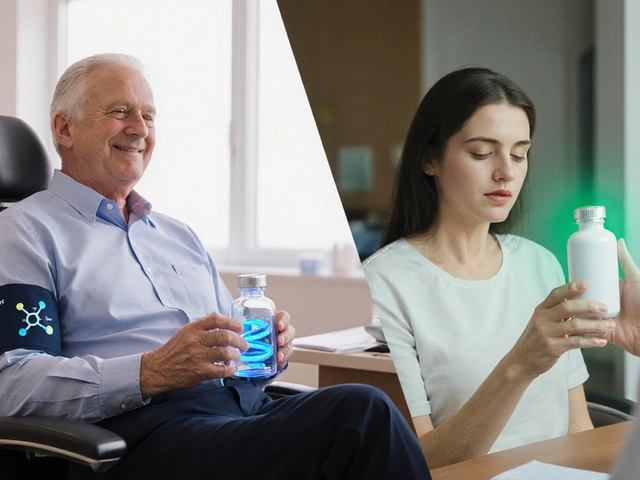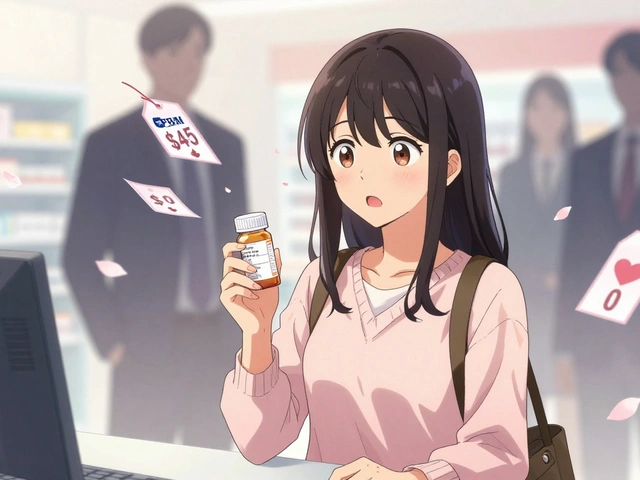
You clicked a big promise. If a mineral you never hear about could boost immunity and balance hormones, that would be huge. Here’s the catch: the hype around indium is way ahead of the science. I’ll show you what indium is, what researchers actually know as of 2025, how to weigh risks, and what to do instead if your real goal is fewer sick days or steadier hormones. I keep this kind of thing tight because I’m a dad who reads labels out loud at the breakfast table while Tobias rolls his eyes.
- There’s no solid human evidence that indium strengthens immunity or balances hormones; no randomized controlled trials as of 2025.
- Indium isn’t an essential nutrient; there’s no recommended intake or approved health claims from major regulators.
- Safety for long-term oral use is unknown; inhaled forms are linked to lung disease in workers, which should make you cautious about the element in general.
- If you still want to test it, keep the dose conservative, use third-party-tested products, track outcomes, and set a clear stop date.
- For immune support and hormone balance, there are safer, proven steps that give real returns.
What Indium Is (and Why It’s Pitched as a Miracle)
Indium is a soft, silvery metal. You’ll find it in touch screens as indium tin oxide, not in spinach or salmon as a meaningful nutrient. It’s not listed among essential minerals, and there’s no dietary reference intake. In other words, your body doesn’t need supplemental indium to run.
So why is the supplement world buzzing about it? A cluster of legacy ideas from trace-element research in the mid-20th century suggested indium might influence other minerals or endocrine signaling. Marketers turned that into bold promises: faster immune response, better sleep, more energy, balanced thyroid and sex hormones. Most modern claims trace back to old observations or lab notes that didn’t become rigorous human trials.
Supplement bottles usually contain indium sulfate or similar salts, sold in droppers or capsules. Labels often mention morning dosing on an empty stomach to ‘activate’ the endocrine axis. That sounds precise, but it’s marketing choreography more than settled physiology.
Quick reality check: as of August 30, 2025, there’s no consensus among endocrinologists, immunologists, or nutrition scientists that taking an indium supplement makes healthy adults more resilient to infections or more hormonally ‘balanced.’
Evidence Check: Immunity and Hormone Claims
Short version: strong claims need strong trials. We don’t have them for indium.
Immunity. I searched the usual places: PubMed, trial registries, major review bodies. There are no well-designed randomized controlled trials in humans showing that oral indium reduces respiratory infections, shortens colds, or improves vaccine responses. The U.S. NIH Office of Dietary Supplements doesn’t even host a fact sheet on indium because it’s not an essential nutrient. The FDA hasn’t authorized any disease claims for indium products. The European Food Safety Authority (EFSA) has not approved immunity or hormone claims for indium either. When immune benefits exist, you see consistent human data across seasons, age groups, and dosages. We just don’t have that here.
Hormones. The big pitch is ‘balanced hormones’-better thyroid function, steadier adrenal output, and healthier sex hormone levels. I haven’t found peer-reviewed human trials confirming any of this. No RCTs showing improved free T3/T4, TSH, testosterone, estradiol, or cortisol patterns from oral indium in adults. Endocrine Society guidelines (2023) on hormone disorders don’t mention indium as a therapy. In toxicology literature, indium compounds are monitored because of potential organ effects at higher exposures, not because of benefits.
What about anecdotes? You’ll find stories-more energy, fewer colds, clearer skin-but anecdotes cut both ways. Without controls, it’s impossible to tell whether a change came from better sleep, a new training routine, seasonal patterns, or the novelty effect. I love a good N-of-1 experiment, but you need a plan, a baseline, and a stop rule.
How to vet a supplement claim in 60 seconds:
- Ask: Are there randomized, placebo-controlled human trials with objective endpoints (lab values, infection rates)?
- Check: Are trials replicated by independent teams, not just one manufacturer?
- Scan: Do major bodies (NIH ODS, FDA, EFSA) recognize or authorize any claims?
- Verify: Is there a plausible mechanism that matches the dose and route used in humans?
Indium doesn’t clear those bars today.
| Topic | What marketers claim | What the science shows (2025) | Evidence grade | Notes |
|---|---|---|---|---|
| Immunity | Fewer colds, stronger immune response | No human RCTs; no regulator-approved claims | Very low | NIH ODS has no indium fact sheet; EFSA/FDA have not authorized claims |
| Hormone balance | Balances thyroid, adrenal, and sex hormones | No controlled human evidence | Very low | Not in endocrine guidelines as a therapy |
| Energy/sleep | More energy, better sleep quality | Anecdotal only | Very low | Placebo and lifestyle confounders likely |
| Safety | Safe trace mineral | Oral long-term data limited; inhaled forms hazardous in workplaces | Unknown for chronic use | NIOSH reports ‘indium lung disease’ with occupational exposure |

Safety, Dosing, and Regulations in 2025
Indium salts in supplements live in a gray area: they’re sold as dietary supplements in some markets, but they’re not essential nutrients, and no public health body sets an intake target or upper limit. That’s a red flag when the pitch is daily use.
Safety. The best-documented risks involve inhaled indium compounds in workplaces, not oral supplements. NIOSH has warned about ‘indium lung disease’ from indium tin oxide dust exposure, including lung inflammation and scarring. That doesn’t mean oral drops do the same thing, but it tells you the element can be biologically active and not always in a good way. For oral use, we lack long-term human data. Animal studies at higher doses raise concerns about organ effects, but translating those doses to safe human ranges is guesswork. Without clear excretion and accumulation data for chronic oral use in humans, ‘we don’t know’ is the honest answer.
Dosing. Many retail labels list 1-2 mg elemental indium per day, often as indium sulfate. These numbers aren’t based on human outcome studies; they’re marketing conventions. If a label suggests higher ‘loading’ doses, be especially skeptical. There’s no accepted safe upper limit for daily indium intake in humans.
Interactions. Because indium might compete with other metals in transport systems, there’s a theoretical risk of interfering with zinc, copper, iron, or iodine handling. We don’t have clean human data, but it’s another reason to avoid stacking indium with high-dose mineral blends without a clinician’s eye on your labs. If you take thyroid meds, sex hormones, or steroids, don’t add indium without talking to your prescriber.
Populations that should steer clear:
- Pregnant or breastfeeding individuals (unknown safety)
- Children and teens (don’t experiment on developing bodies)
- People with kidney or liver disease (uncertain clearance)
- Anyone with diagnosed endocrine disorders unless an endocrinologist approves
Regulatory snapshots (2025):
- United States: Sold as a dietary supplement; FDA has not approved indium for treating disease or authorized immunity/hormone claims.
- European Union: EFSA has not authorized health claims for indium; indium salts may be treated as novel food ingredients if used in supplements, which triggers strict review.
- Canada/Australia: Check national registries; products making disease claims require licenses most indium products do not have.
Bottom line on safety: a lack of harm evidence isn’t proof of safety. When the benefit case is weak and safety is murky, daily long-term use doesn’t pencil out.
If You’re Still Considering Indium: A Practical Decision Path
Curious but cautious? Here’s a clean, clinical way to decide-and avoid getting stuck in supplement limbo.
- Define your real job to be done. Is it fewer winter colds, better sleep, or fixing low energy? Different jobs need different tools.
- Check for root causes first. Ask your clinician about basic labs: CBC, ferritin, vitamin D, B12, TSH/free T4, fasting glucose/A1c, lipids, and for men with symptoms, morning total testosterone (two separate mornings). If something is off, fix that before adding exotic minerals.
- Run proven basics for 6-8 weeks. Sleep 7-9 hours, 150+ minutes of weekly moderate exercise, protein at 1.2-1.6 g/kg/day, alcohol under 7 drinks/week, plus vaccinations current for your age and risk. Track how you feel.
- If you still want an indium trial, set a small risk budget. Pick a reputable brand with third-party testing (USP, NSF, or an independent COA that shows identity and purity). Avoid proprietary blends-you want to know the actual elemental indium per dose.
- Keep the dose conservative. Do not exceed the label. Many labels list 1-2 mg/day. There’s no evidence more is better.
- Set a stop date and metrics. 30-45 days is plenty to see if anything changes. Track sleep (duration and quality), morning energy (0-10 scale), training output (sets/reps/time), resting heart rate, and any side effects (GI upset, headaches, rash, weird taste).
- Red flags-stop immediately and call your clinician: persistent cough or shortness of breath, chest discomfort, dark urine, yellowing eyes, severe fatigue, new palpitations, or anything that feels wrong.
Quick checklist before you buy:
- Do I have a clear goal and baseline?
- Have I ruled out common deficits (iron, vitamin D, sleep)?
- Is there third-party testing on the exact lot I’m buying?
- Have I set a 30-45 day stop date and tracking plan?
- Did I check with my clinician about meds and conditions?
Mini log template you can copy to your notes app:
- Day 0: Baseline-Sleep 6.8h; energy 6/10; RHR 61; workouts 3x/week; colds in last 90 days: 1.
- Day 15: Sleep ___; energy ___; RHR ___; workouts ___; side effects: ___.
- Day 30: Sleep ___; energy ___; RHR ___; workouts ___; side effects: ___.
- Go/No-Go: Is there a clear, meaningful change without side effects?

Safer, Proven Alternatives for Immune Support and Hormone Balance
If your end goal is stronger immunity or steadier hormones, here are options with better evidence and fewer unknowns.
For immunity:
- Vaccinations up to date. Seasonal influenza and updated COVID-19 shots reduce severe illness risk; CDC and WHO keep current schedules.
- Vitamin D if you’re low. Several trials show fewer respiratory infections in people who correct deficiency; dosing guided by blood levels. Endocrine Society guidance (2023) supports personalized dosing.
- Zinc for early colds. Zinc acetate/gluconate lozenges started within 24 hours may shorten cold duration; Cochrane-type reviews show mixed but meaningful signals when done right. Don’t use high-dose zinc daily long term; it can lower copper.
- Sleep and training. Meta-analyses show sleep restriction impairs immune function, and regular moderate exercise lowers URTI risk. Aim for consistent bed/wake times and 150-300 minutes/week of moderate activity.
- Targeted probiotics. Certain strains (like Lactobacillus rhamnosus GG) have data for fewer URTIs in specific groups, but effects are strain-specific. Pick products that list strain IDs and CFUs at end of shelf life.
For hormone balance (match the tool to the job):
- Stress and cortisol: Cognitive behavioral strategies, breathwork, and 150 minutes/week of aerobic training reduce perceived stress and improve sleep. Ashwagandha has human data for stress reduction; choose standardized extracts and avoid if you have thyroid issues unless cleared.
- Thyroid concerns: Don’t self-dose iodine or selenium without labs. Mild iodine deficiency is rare in developed countries; excess iodine can worsen thyroid disease. See your clinician for TSH and free T4; treat the diagnosis, not the internet list.
- PCOS-related cycles: Inositol (myo- and D-chiro- ratios) has RCTs supporting ovulatory function and metabolic markers in PCOS. Work with your clinician for formulation and dose.
- Low energy in men: Morning resistance training, 7-9 hours of sleep, fat loss if overweight, and treating sleep apnea often raise testosterone more than any capsule. American Urological Association guidelines emphasize diagnosing real hypogonadism before treatment.
- Perimenopause symptoms: Evidence supports CBT for insomnia, strength training for mood/sleep, and clinician-guided menopausal hormone therapy when appropriate. Supplements are secondary here.
Real-world example. Last winter I coached a friend who wanted ‘immune balance.’ He was chasing exotic minerals. We did labs, topped up vitamin D, fixed sleep (in bed by 10:30), and added two short runs per week. He had one mild cold all season and felt better by March. Zero magic minerals. Sometimes boring works.
FAQ-short answers:
- Is indium essential? No. There’s no required intake for human health.
- Can indium boost immunity fast? There’s no human trial evidence saying it does.
- How long until I’d feel something? If you trial it, 30-45 days is enough to see if anything changes. If nothing clears by then, stop.
- Can I stack indium with zinc or iodine? Not smart without labs; metals can interact. Talk to your clinician.
- Will indium show on heavy metal tests? Possibly, depending on the test, but that doesn’t tell you benefit or harm. It just shows exposure.
- Is indium orotate better than indium sulfate? No evidence that any salt form delivers unique benefits in humans.
Next steps, depending on who you are:
- Beginner who heard about indium on a podcast: Pause. List your real goals, get basic labs, fix sleep and training, then reassess.
- Busy parent thinking about winter sick days: Focus on sleep routines, vitamin D if low, family vaccine updates, hand hygiene that kids will actually use. Skip the indium experiment with kids.
- Biohacker: If you trial indium, cap it at 30-45 days with objective tracking and third-party-tested product only. No stacking with high-dose metals.
- Thyroid or hormone diagnosis: See your endocrinologist. Don’t add indium on top of prescription therapy.
One last lens I use at home: if a supplement’s promise is big but the human data is thin, I pass. Money, time, and attention are limited. Put them where the payoff is real.






There are 5 Comments
Leo Lee
Look, I get why people chase miracle minerals - I used to buy every ‘biohacker’ drop that promised glowing skin and superhuman energy. But indium? Come on. We’re talking about a metal used in touchscreens. If your immune system needs a metal from a smartphone to function, you’ve got bigger problems than a weak immune response. And let’s be real - if this stuff worked, Big Pharma would’ve bought it and patented it years ago. The fact that it’s sold in 5ml droppers with no FDA approval? Red flag city. I’m not against experimentation, but this is just snake oil with a fancy label and a LinkedIn influencer behind it.
Isabel Piaggi
i mean... i tried it for 3 weeks just to see what would happen 😅 i took 1.5mg every morning on an empty stomach like the bottle said and honestly... i dont know if it did anything or if i just started sleeping better because i stopped scrolling at midnight? my energy felt kinda steady but also i drank more water and started walking my dog twice a day so who knows? the taste was weird like metallic pennies and my stomach felt weird for the first 3 days? i stopped because i got scared lmao also my mom said ‘if it’s not in food then why are you putting it in your body’ and now i cant unhear that
Tom McInnes
Well-researched and thoroughly rational. The absence of RCTs is decisive. The occupational toxicity data is particularly concerning. I would advise against use until long-term oral safety profiles are established. The burden of proof lies with the proponents, not the skeptics.
Stephanie Cepero
I really appreciate how you broke this down - especially the part about setting a stop date and tracking symptoms. I’ve seen so many people jump on these ‘miracle’ supplements without any plan, then get stuck in a loop of ‘maybe it’s working, maybe it’s not, maybe I need more?’ You made it so clear: if you’re going to try something with zero proven benefit and murky safety, do it like a scientist, not a gambler. Also, the ‘boring works’ example? That’s the real win. I’m going to print out your mini-log template and give it to my sister - she’s been on a 6-month indium kick after a YouTube video. I think she needs this.
Michael Tribone
Hey, I’m not saying indium is the answer - but I do think the real takeaway here is that we’re all hungry for simple fixes. We’re tired, stressed, and overwhelmed. When someone says ‘take this drop and your hormones will balance,’ it feels like a lifeline. But you’re right - the real magic is in sleep, movement, and checking your vitamin D. I’ve told my whole family: if it doesn’t come from food, sunlight, or a good night’s rest, it’s probably not worth it. And hey - if you’re still curious? Try the 30-day experiment, track everything, and come back here and tell us what happened. No judgment. Just real talk. We’re all just trying to feel better, you know?
Write a comment
Your email address will not be published. Required fields are marked *